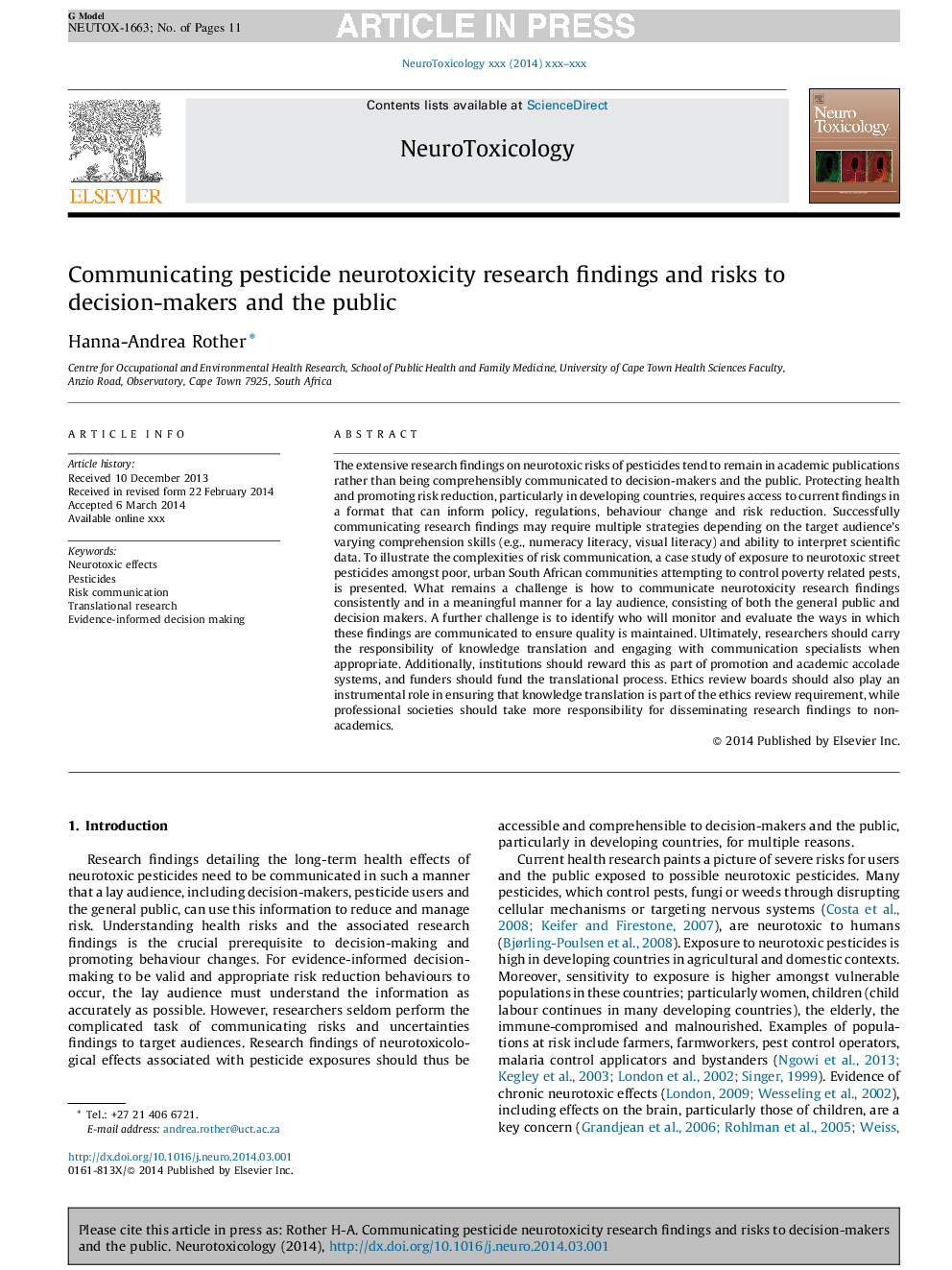| Article ID | Journal | Published Year | Pages | File Type |
|---|---|---|---|---|
| 5854949 | NeuroToxicology | 2014 | 11 Pages |
Abstract
The extensive research findings on neurotoxic risks of pesticides tend to remain in academic publications rather than being comprehensibly communicated to decision-makers and the public. Protecting health and promoting risk reduction, particularly in developing countries, requires access to current findings in a format that can inform policy, regulations, behaviour change and risk reduction. Successfully communicating research findings may require multiple strategies depending on the target audience's varying comprehension skills (e.g., numeracy literacy, visual literacy) and ability to interpret scientific data. To illustrate the complexities of risk communication, a case study of exposure to neurotoxic street pesticides amongst poor, urban South African communities attempting to control poverty related pests, is presented. What remains a challenge is how to communicate neurotoxicity research findings consistently and in a meaningful manner for a lay audience, consisting of both the general public and decision makers. A further challenge is to identify who will monitor and evaluate the ways in which these findings are communicated to ensure quality is maintained. Ultimately, researchers should carry the responsibility of knowledge translation and engaging with communication specialists when appropriate. Additionally, institutions should reward this as part of promotion and academic accolade systems, and funders should fund the translational process. Ethics review boards should also play an instrumental role in ensuring that knowledge translation is part of the ethics review requirement, while professional societies should take more responsibility for disseminating research findings to non-academics.
Keywords
Related Topics
Life Sciences
Environmental Science
Health, Toxicology and Mutagenesis
Authors
Hanna-Andrea Rother,
